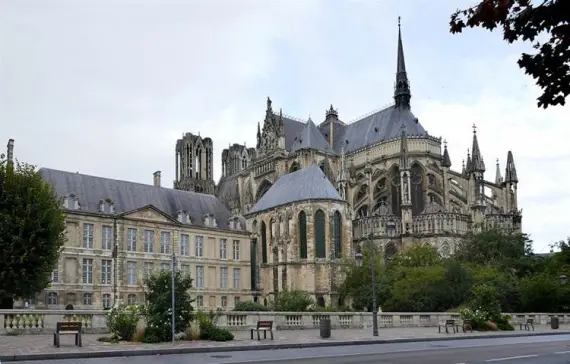Reims Bus - Reims Monuments, What to See -. Sindbad
REIMS

Its history dates back to Roman times, when Reims was the capital of the country of the Remes, a large Celtic tribe. Later the settlement was conquered by the Romans, and in the 5th century it came under the rule of the Franks. In 496, the Frankish king, Chlodwig I, was baptized in the local church. The city had been on the route of numerous trade routes since ancient times, which over the years led to its significant economic development. For several centuries Reims even competed with Paris for the title of the most important center in the country. It also became famous as a center of culture and science. During World War I, Reims was virtually razed to the ground. It was in this city on May 7, 1945 at 2:41 a.m. that the act of ending World War II on the Western Front was signed.
Reims - what to see in the city of champagne and history?
Surrounded by vineyards and boasting a long history, Reims can offer a lot to tourists. The city has valuable monuments, tasty cuisine and more than 200 hectares of green spaces. What to see here.
Notre-Dame Cathedral in Reims
This Gothic cathedral, known as the "Cathedral of Angels," was built in the 13th century and is a UNESCO World Heritage Site. It is considered the most classical and proportioned Gothic temple in all of France. It was built on the ruins of an earlier church from 401. From the outside, it resembles Notre-Dame Cathedral in Paris - the richly decorated facade features three large portals and many images of angels and saints, while the interior of the cathedral hides historic chapels, a 17th-century baptistery and beautiful stained glass windows by Marc Chagall. From its earliest days until 1825, the temple was the site of coronations of French kings.
Palais du Tau
When visiting Reims Cathedral, it is also worth stopping by the museum in the Archbishop's Palace (Palais du Tau). It houses collections of sacred art, including valuable reliquaries, tapestries and coronation items of French rulers, such as the "Holy Ampoule" with oil used to anoint new kings during coronations.
Basilica and Abbey of St. Remigius in Reims
The oldest church in the city dates back to the 11th century. It was built in the Romanesque style on a Latin cross plan on the site of a 6th century abbey. Over time it also gained Gothic elements. Inside are the tombs of St. Remigius, the archbishops of Reims, and members of royal families, such as King Charles I of the Franks. The organ and stained-glass windows are also worth seeing here, such as the well-preserved 12th-century stained-glass window in the facade.
St. Remigius Museum in Reims
Dating back to the 17th and 18th centuries, the Abbey of Saint Remi houses the Saint Remigius Museum, which presents the history of the city. Among other things, archaeological finds from the Reims area can be viewed here.
Gate of Mars
This triumphal arch still dates back to Roman times, from the 3rd century AD. It measures 33 meters long, 13 meters high and almost 6.5 meters wide and is the widest Roman arch. Originally there was a temple of Mars next to it, to which it owes its name.
Cryptoportique Reims
The Cryptoportique in Reims is partially underground ancient galleries. The Cryptoportique of Reims is one of five Roman buildings of this type discovered so far. It was built in the 3rd century AD under the Roman forum and was probably a place where grain was stored. Today, visitors can walk through two of its galleries.
Reims Synagogue
This synagogue dates back to the 19th century. It was built in the Neo-Byzantine style. In front of the synagogue is a memorial to the Jews of Reims deported to death camps during World War II.
REIMS - list of coach stops:
- Gare SNCF - 6 Rue André Pingat
SINDBAD coach stop:
REIMS - list of international connections:
© 2025 Sindbad
Technical support, assistance, payments: Sindbad IT
© 2025 Sindbad
Technical support, assistance, payments: Sindbad IT
